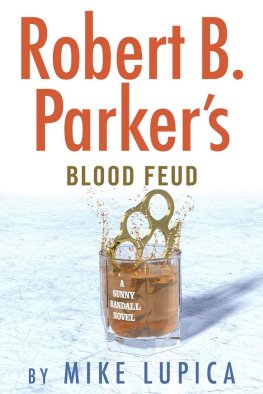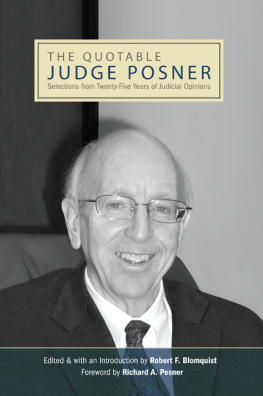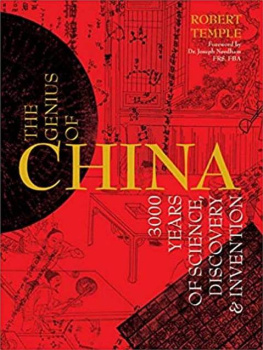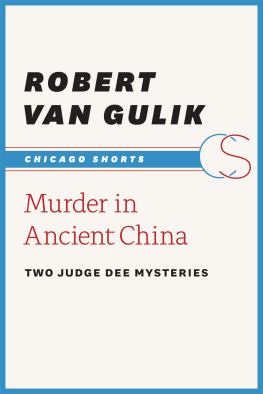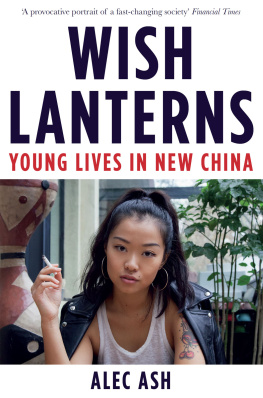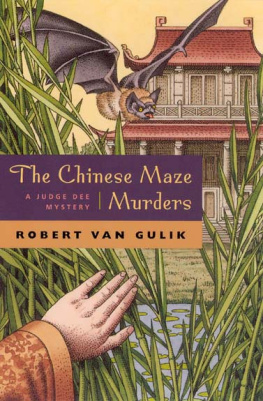
Robert Van Gulik
The Chinese Bell Murders

Judge Dee
Collection of the National Palace Museum
Taiwan, Republic of China
It should be noted that in China the surname hereprinted in capitals precedes the personal name
Main Characters
DEE Jen-djieh, newly appointed magistrate of Poo-yang, a town district in Kiangsu Province. Referred to as 'Judge Dee' or 'the judge.'
HOONG Liang, Judge Dee's trusted adviser and Sergeant of the tribunal. Referred to as 'Sergeant Hoong' or 'the sergeant.'
MA Joong "|
CHIAO Tai the three lieutenants of Judge Dee.
TAO Gan J
Persons connected with' The Rape Murder in Half Moon Street '
HSIAO Foo-han, a butcher, father of the murdered girl. Referred to as 'Butcher Hsiao.'
PURE JADE, his daughter, victim of the rape murder.
LOONG, a tailor living opposite Butcher Hsiao.
WANG Hsien-djoong, a Candidate of Literature.
YANG Poo, his friend.
GAO, warden of the quarter where the murder occurred.
HWANG San, a vagabond.
Persons connected with ' The Secret of the Buddhist Temple '
'Spiritual Virtue,' abbot of the Temple of Boundless Mercy.
'Complete Enlightenment,' former abbot of the same temple.
BAO, a retired General.
WAN, a retired judge of the Provincial Court.
LING, master of the Guild of Goldsmiths.
WEN, master of the Guild of Carpenters.
Persons connected with' The Mysterious Skeleton
Mrs LIANG, nee OU-YANG, widow of a wealthy Cantonese merchant.
LIANG Hoong, her son, killed by brigands.
LIANG Ko-fa, her grandson.
LIN Fan, a wealthy merchant from Canton.
Others
SHENG Pa, counsellor of the Beggars' Guild.
PAN, magistrate of the districtWoo-yee. LO, magistrate of the district Chin-hwa.
APRICOT, a prostitute of Chin-hwa.
BLUE JADE, her sister.

Years ago when looking for English materials on life in traditional China, I found the novels, commentaries, and reflections of Lin Yu-tang, Pearl Buck, and Alice Tisdale Hobart very enlightening. Their perceptions, written in charming prose, gently-introduced the readers of the 1930s to Chinese society, with its gentry, peasants, and businessmen of the port cities. These writers also translated sensitively certain pieces of popular Chinese literature. Materials of such caliber and character became exceedingly difficult to find in the years following the Second World War, since most Western observers of China, as well as the Chinese themselves, had become obsessed with efforts to explain the decline and fall of the Nationalist government and the rise of the Communists to power. So it was with a sense of relief and satisfaction that readers of the 1950s welcomed the appearance of Robert Hans van Gulik's Judge Dee detective novels, in which imperial China is depicted as a living, identifiable culture rather than as a characterless pawn in the international power game. Because it is no longer possible to recapture the old China by visiting the new, the Dee stories continue to be one of the best available means of recovering a bit of the everyday life of the past.
The career of Van Gulik was a varicolored tapestry woven of threads from the skeins of scholarship, diplomacy, and art. The son of a medical officer of the Netherlands army of Indonesia, he was born in 1910 in Zutphen in Holland 's province of Gelderland. Between the ages of three to twelve he lived as a colonial in Indonesia. Upon his family's return to Holland in 1922, young Robert was enrolled in the classical gymnasium (secondary school) at Nijmegen, where his considerable talents for language were quickly recognized. Through C. C. Uhlenbeck, a linguist of Amsterdam University, he was introduced at this early age to the study of Sanskrit and to the language of the Blackfoot Indians of America. In his spare time, he took private lessons in Chinese, his first tutor being a Chinese student of agriculture in Wageningen.
In 1934 Van Gulik attended the University of Leyden, one of Europe 's major centers for East Asian studies. Here he worked at Chinese and Japanese systematically but without relinquishing his earlier interest in other Asian languages and literatures. For example, in 1932 he published a Dutch translation of an ancient Indian play written by Kalidasa (ca. a.d. 400). His doctoral dissertation on the horse cult of China, Japan, India, and Tibet, defended at Utrecht in 1934, was published in 1935 by Brill, the publisher of Leyden who specializes in Asian materials. In the meantime Van Gulik also wrote articles for Dutch periodicals on Chinese, Indian, and Indonesian topics; in these articles he first displayed his love for the ancient ways of Asia and his resigned acceptance of the changes taking place.
With his university studies behind him, Van Gulik entered the foreign service of the Netherlands in 1935. His first assignment took him to the legation at Tokyo, where he had an opportunity in off hours to pursue his private scholarly studies. Most of his subjects of inquiry were chosen with reference to the preoccupations of the traditional Chinese literati. His investigations were limited in scope, though rarely in depth, by the time restrictions under which he worked. Like a traditional Chinese gentleman, he himself collected rare books, small objets d'art, scroll paintings, and musical instruments. He also scrutinized his treasures with a scholarship and a connoisseurship that won the respect of leading Oriental collectors. He translated a famous Chinese text by Mi Fu on ink stones, the valued objects on which the calligrapher prepares his ink for writing. He was himself a talented calligrapher, a rare achievement for a Westerner. He played the ancient Chinese lute (ch'in) and wrote two monographs about it based on Chinese sources. Most of his publications in these peaceful and seminal years were issued in Peking and Tokyo and won appreciation from both Asian and European scholars.
The holocaust of the Second World War brought an abrupt end to Van Gulik's first Tokyo sojourn. Evacuated in 1942 with other Allied diplomats, he was sent to Chungking as secretary of the Netherlands mission to China. At this remote post he published in 1944 an edition of a rare Chinese work about the Ch'an master Tung-kao, a Buddhist monk who was loyal to the Ming cause in the days of its defeat. He remained in China until the end of the European war in 1945, then returned to The Hague until 1947. The following two years he spent as Councillor of the Dutch embassy in Washington, but in 1949 he finally returned to Japan for a four-year tour of duty.
In 1940 Van Gulik had run across an anonymous eighteenth-century Chinese detective novel that entranced him. Thereafter the vagaries of war and its aftermath cut him off from many of his sources and deprived him of much of his leisure, but he managed to spend odds and ends of free time in studying Chinese popular literature, especially detective and courtroom stories. He prepared an English translation of a traditional detective tale which he published at Tokyo in a limited edition in 1949 under the title
Next page


